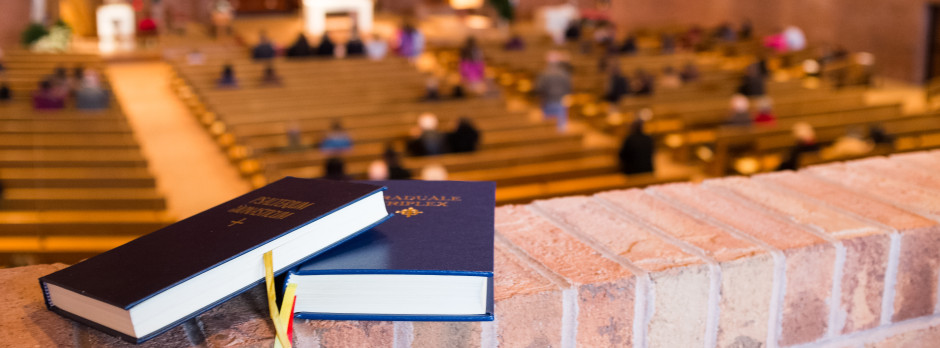Happy Solfège Day! Wait, Happy Nativity of St. John the Baptist! Wait, they’re the same day!
Yes, today we celebrate both the last and greatest of the Old Testament prophets and the musical mnemonic that enabled Julie Andrews to caper about the Austrian countryside.
The Italian monk Paulus Diaconus (c. 720-799) wrote a hymn in Sapphic meter for the Nativity of St. John the Baptist, which was eventually assigned to the canonical hour of Vespers. The first stanza is the key bit (emphases in bold are mine):
Ut queant laxis resonare fibris
mira gestorum famuli tuorum,
solve polluti labii reatum,
sancte Ioannes.
which in English goes something like this:
O for thy Spirit, Holy John, to chasten
Lips sin-polluted, fettered tongues to loosen,
So by thy children might thy deeds of wonder
Meetly be chanted.
A couple centuries later, the Italian monk Guido of Arezzo (c. 991-sometime after 1033) found, or composed, a plainchant tune for this hymn, and he noticed that the first note of each phrase (except the last) made an ascending sequence. He got the brilliant idea to use the corresponding syllables of the hymn text as names for the degrees of the scale, and thus was born solfège:
Ut
Re
Mi
Fa
Sol
La
Do, with its easy-to-sing open vowel, replaced Ut in the 1600s, and Si (from Sancte Ioannes) was added to complete a diatonic scale around the same time. Si became Ti in English-speaking countries in the 19th Century so that each syllable might begin with a different letter.
This evening, then, let us raise our voices to sing Ut queant laxis, and thank God both for Saint John and the ingenuity of our musical forebears.

Ut, A Hymn, A Latin Hymn
Happy Solfège Day! Wait, Happy Nativity of St. John the Baptist! Wait, they’re the same day!
Yes, today we celebrate both the last and greatest of the Old Testament prophets and the musical mnemonic that enabled Julie Andrews to caper about the Austrian countryside.
The Italian monk Paulus Diaconus (c. 720-799) wrote a hymn in Sapphic meter for the Nativity of St. John the Baptist, which was eventually assigned to the canonical hour of Vespers. The first stanza is the key bit (emphases in bold are mine):
which in English goes something like this:
A couple centuries later, the Italian monk Guido of Arezzo (c. 991-sometime after 1033) found, or composed, a plainchant tune for this hymn, and he noticed that the first note of each phrase (except the last) made an ascending sequence. He got the brilliant idea to use the corresponding syllables of the hymn text as names for the degrees of the scale, and thus was born solfège:
Ut
Re
Mi
Fa
Sol
La
Do, with its easy-to-sing open vowel, replaced Ut in the 1600s, and Si (from Sancte Ioannes) was added to complete a diatonic scale around the same time. Si became Ti in English-speaking countries in the 19th Century so that each syllable might begin with a different letter.
This evening, then, let us raise our voices to sing Ut queant laxis, and thank God both for Saint John and the ingenuity of our musical forebears.